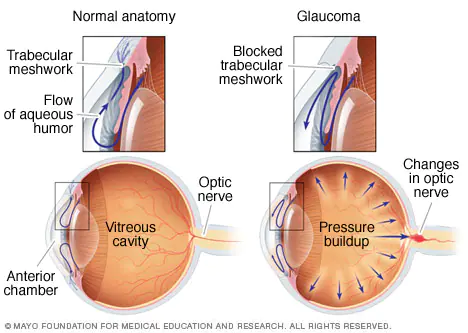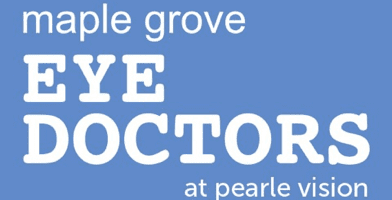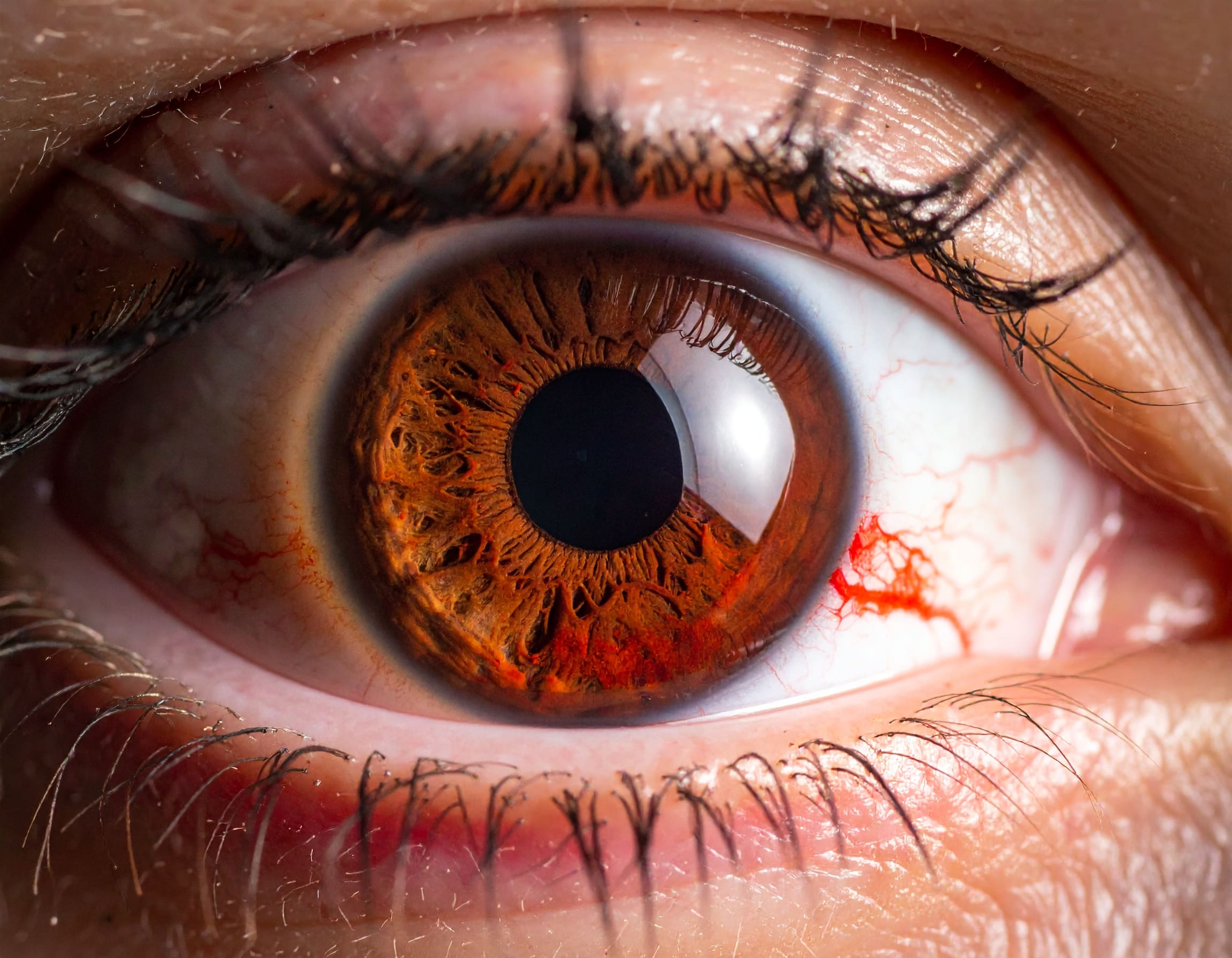With all types of glaucoma, the nerve connecting the eye to the brain is damaged, usually due to high eye pressure. The most common type of glaucoma (open-angle glaucoma) often has no symptoms other than slow vision loss.

YIKES – THAT’S SCARY! Angle-closure glaucoma, although rare, is a medical emergency, and its symptoms include eye pain with nausea and sudden visual disturbance. What’s even more terrifying? Roughly all of the American glaucoma population goes undiagnosed. Also, there’s NO CURE! But, early treatment, including eye drops and medications, can stop further damage.

WHAT IS GLAUCOMA?
Glaucoma is a common eye disease! It is also known as “the sneak thief of sight.” Once you lose sight, there’s no cure (as of yet). It is the second leading cause of irreversible blindness in the country. A group of eye diseases, collectively called glaucoma, refers to chronic and progressive damage to the optic nerve of the eyes. It gradually steals your sight without any warning. The optic nerve is like an electric cable with millions of wires carrying images from the eyes to the nerves. When damage occurs, you can permanently lose your vision.
Today more than 3 million Americans are living with glaucoma. By 2030, this number is expected to reach 4.2 million, which is a 58% increase. Treatment can help to some extent. But the condition can’t be cured, so management is important! Glaucoma requires an optometrist’s medical diagnosis with lab tests and/or imaging.
- The most common type of glaucoma (open-angle glaucoma) often has no symptoms other than slow vision loss. You can also witness pressure inside the eyes (intraocular pressure).
- Another type is angle-closure glaucoma. Although rare, it is a medical emergency, and the symptoms include eye pain with nausea and sudden visual disturbance. Read more about the different types of glaucoma to understand your unique needs.

WHAT ARE THE TREATMENT OPTIONS FOR GLAUCOMA?
Treatment includes eye drops, medications, and surgery.
Glaucoma is an eye problem that has no symptoms until vision loss starts to set in. But people may experience the following:
- Blurry vision
- Distorted vision
- Permanent vision loss
If caught early on, experts can help manage the symptoms. A comprehensive eye exam every year is crucial to assess your eye health. In addition, focus on a healthy diet, manage any underlying health conditions, and stay active to prevent vision deterioration.

Your doctor might advise using anti-glaucoma medications that reduce pressure in the eyes. The treatment plan can also consist of eye drops; these may cause some discomfort and temporary redness, but the drops can preserve your vision to a great extent!
WHO IS AT RISK?
Around 60 million people worldwide have glaucoma. Anyone can develop glaucoma. But certain groups are more at risk.
People over 60, with a family history of glaucoma, and/or those with diabetes are more likely to get glaucoma.
The condition is more prevalent in Black/ African American and Hispanic/ Latino persons, especially those over 40. People with diabetes are two times more susceptible to developing glaucoma and other vision-related problems. Those severely nearsighted or farsighted with thinner corneas are also at risk of glaucoma.
You’re at even greater risk if you:
- Take seizure, steroid, or bladder control medications
- Have high eye pressure, sickle cell anemia, or heart disease
Thus, regular eye exams are essential. With a dilated eye exam, the doctor checks your optic nerve, measures the intraocular pressure, and conducts other tests like retinal scans and visual field exams. To prevent unnecessary vision loss, maintain a healthy diet and lifestyle right from the beginning. Read more to learn about improving your vision for the future.
Four Key Facts About Glaucoma
1. Glaucoma Is a Leading Cause of Blindness
Glaucoma can cause blindness if it is left untreated. And unfortunately, approximately 10% of people with glaucoma who receive proper treatment still experience loss of vision.
2. There Is No Cure (Yet) For Glaucoma
Glaucoma is not curable and vision loss cannot be regained. With medication and/or surgery, it is possible to halt further loss of vision. Since open-angle glaucoma is a chronic condition, it must be monitored for life. Diagnosis is the first step to preserving your vision.
3. Everyone Is At Risk For Glaucoma – YES, This Is True.
Everyone is at risk for glaucoma, from babies to senior citizens. Older people are at a higher risk for glaucoma, but babies can be born with glaucoma (approximately 1 out of every 10,000 babies born in the United States). Young adults can get glaucoma, too. African Americans, in particular, are susceptible at a younger age.
4. There May Be No Symptoms to Warn You
There are virtually no symptoms with open-angle glaucoma, the most common form. Usually, no pain is associated with increased eye pressure. Vision loss begins with peripheral or side vision. You may compensate for this unconsciously by turning your head to the side and may not notice anything until significant vision is lost. The best way to protect your sight from glaucoma is to get tested. If you have glaucoma, treatment can begin immediately.
5. An Eye Exam Is the Only Way to Catch Glaucoma Early
Glaucoma is scary because there is a major lack of symptoms. It leads to diagnosing the problem late. Over time, you lose your peripheral (side) vision and eventually the central (straight ahead) vision. Don’t let glaucoma steal your sight. Schedule your eye exams regularly. It won’t only detect glaucoma, but it can also help detect many eye-related issues and prevent them from worsening.







